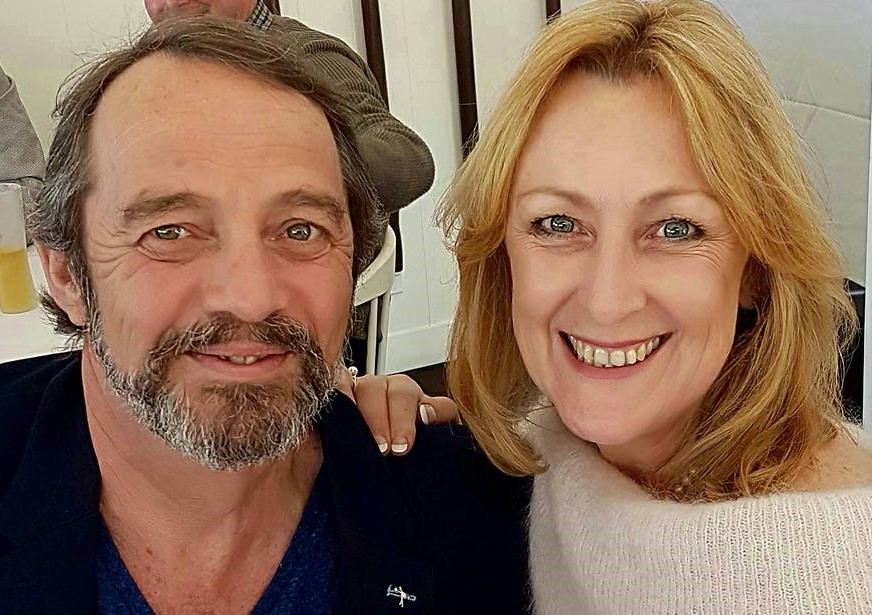Recently, I celebrated my 60th birthday with family and friends, and my sister, Felicity gave a speech unlike any other. It captured, in particular, my love for art… and my partiality for a red wine. Enjoy!!

‘The Fiona’ – by Felicity Reynolds, June 24, 2017

As we are gathered here today to celebrate the 60th anniversary of the first time the work of art, ‘The Fiona’, went on public display, I think it’s important that we understand more about the creation and history of this fascinating piece of modern art….which…..whilst indicative of post war modernity, still remains relevant to post modernity and still has a solid place within altermodernism.
‘The Fiona’ was created by 2 artist collaborators, Reynolds and Reynolds, over a 9 month period spanning 1956 and 1957. At the time, critics weren’t sure if ‘The Fiona’ was a comment on Duchamp’s early 20th century work and the ‘ready-made object’ or if it was a juxtaposition of the 19th century crafts movement situated within a 20th century fine arts setting. It is now widely agreed that the confusion with Duchamp’s work came from the shit that had also been on display at its first public exhibition.
Although Reynolds and Reynolds never achieved the same critical acclaim given to other Australian artists of their period, such as Boyd or Nolan – and some feminist critics have suggested that their work was under-valued because of the unusual (for that time) artistic collaboration of a man and a woman – Reynolds and Reynolds went on to even greater acclaim and achievement. With the well-known Australian historian and critic, Robert Hughes, suggesting their 2 later works were more clearly defined and improved examples of their work and collaboration. I won’t go into detail here today, as I have written an entire book on ‘The Felicity’ and you are welcome to read that at your leisure. My essay in the Journal of Art Criticism and Positive Space titled ‘The Accident’ covers the history and important contribution to art theory of ‘The Andrew’.
But I digress. In relation to the subject at hand, some have suggested that ‘The Fiona’s’ true artistic heritage lies many centuries back….. during the renaissance and the improved development of depth representation and the practice of perspective. In fact, many people who have seen ‘The Fiona’ over the years have often remarked that its eyes always seem to follow you, no matter where you stand in the room. This may be true, it remains unclear, but the notion that people think this…… is probably the most inspiring feature of the work. It leaves the viewer not sure if it is seeing or if it is the one being seen. A remarkable achievement for 2 rural Australian artists in the mid twentieth century.
‘The Fiona’ was shown in a number of rural locations in the 1960s and 1970s. Wherever it was shown, it drew audiences from a broad base…….from church goers to miners, educators, college students, children and teenagers. Many have already said that ‘The Fiona’s’ ability to speak to all age groups and people from such a large cross section of our society – even during the unremarkable early post-modern period is the reason it remains so admired today.
However, I think that analysis ignores the role played by its current owner and curator.

In 1979 Mr Robert Steel of Whale Beach NSW obtained ‘The Fiona’ in a private negotiation and it has not been back on the market since that time. Although ‘The Fiona’ has been on public display on a great many occasions he has not yet sold it, even though it has likely increased significantly in value over that period.
Steel has taken great care of this work and has undertaken some careful restoration of it over the years…..usually on Saturdays and Sundays….and with some well known restoration techniques involving water and a darkened room. Some also believe he has probably used a lesser known substance…..named a ‘berocca’ (I’m not sure if I’ve pronounced that correctly – I believe it is an Italian term) to help with this crucial restoration work.
None-the-less it has finally started to show a few signs of age and more lines on the work are becoming visible. Recently, the art critic John McDonald has suggested that these changes over time are a testament to the careful collaboration by the late Reynolds and Reynolds and their intent for the work to grow and change over time. Mendelsohn however has criticised this analysis, by suggesting the lines are simply due to the impact of a bottle of Vodka when it was on public display in Russia a few years ago. Both of these analyses have some merit….but it cannot be denied that ‘The Fiona’ focuses on the moment in which such antitheses collide. It works both formally and conceptually to point to thresholds and spaces where both pleasure and time are suggested but not explicitly manifested or differentiated.
The Steel collection is not a large one, but it has grown over the years, as other works have been carefully added. ‘The Fiona’ is now considered to be a key part of the entire Steel collection. An opus of work that whilst they can all be viewed in isolation, the full impact of each of the works are enhanced by viewing them in considered relation with each of the other works.
So, we are left slightly puzzled. Is ‘The Fiona’ a ready-made object inspired by Duchamp? Is it more craft than art? Is it a timely and still relevant nod to post-modernism? Or, is it a drip painting?
This is where, as a critic, I will diverge and suggest that the piece is in fact an installation of the photo realistic lyrical abstraction neo dada post-modern futurist sculptural movement. The viewer can take from it what he or she needs and interpret for herself or himself its meaning and contribution to the full body of work that is our private and public heritage. In a similar manner to the practice of demonstrating the dynamism and unfixity of identity through character transformations, this installation demonstrates this same trait through cycles of transformation, growth and re-creation of new works. Each viewing space parodies real-worlds and real spaces….such as studio, office, home, hotel, hotel, hotel, club etc. Each space is open to the viewer as participant and user; the manner in which they participate with, or use it will be dependent on their identity and place within the broader body of work. Each space is inhabited and uninhabited at different times to play with both presence and absence. Are we here or are we there? Is ‘The Fiona’ really 60 or is it just 2 versions of a 30 year old or 3 versions of a 20 year old? Or perhaps, just half a version of a 120 year old?
Given ‘The Fiona’s’ presence here today and our own specific role in this installation…..as Baudrillard would have no doubt suggested……as ‘guests at a party’ we too form our own juxtaposition in celebrating the present as well as the time that has passed, but which somehow still lives within our shared and unshared memories.
I have no doubt that ‘The Fiona’ will be on public display for many years to come and continue to raise questions for future art critics and the public alike. But today is special, today we celebrate its anniversary and by being present in this moment we also contribute ourselves to the remarkable installation that is known very fondly as ‘The Fiona’.
In closing, we must thank Mr Robert Steel for making ‘The Fiona’ available to us and for taking such great care of this piece of work over the past 38 years.
Please charge your glasses and drink (of course) to celebrate the 60th anniversary of ‘The Fiona’.
Sorry I missed the 60 th anniversary of ‘The Fiona’.Would of loved to have heard ‘The Felicity’ deliver yet another very entertaining speech.😀😂👏👏👏